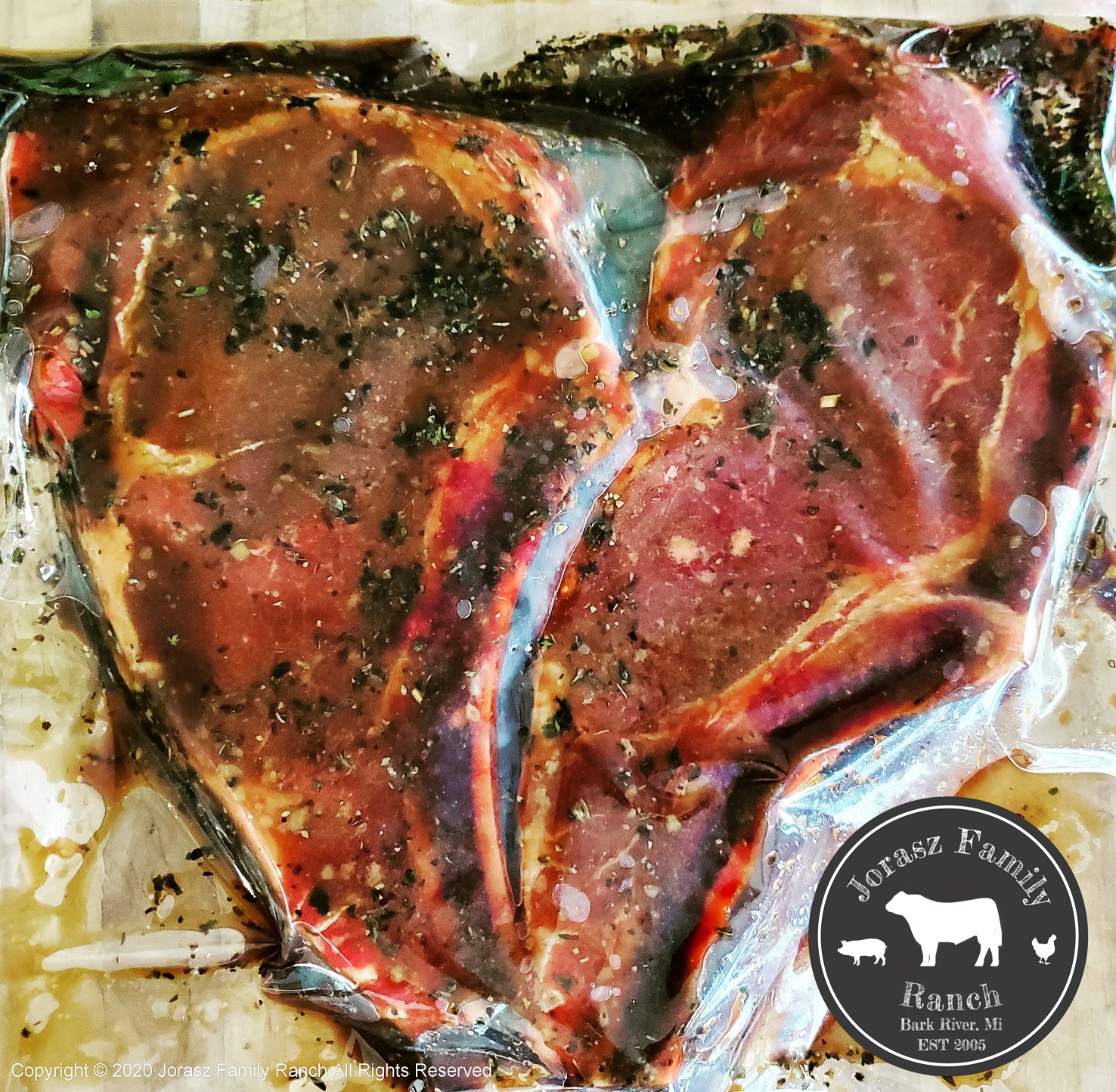Pasture Raised Beef
Only available to herd share members at this time, but hopefully will be able to open it up to others soon!
First- Have you ever had home-grown, pasture raised beef?
There is a huge difference between home-grown beef and the cuts you will buy at your local meat counter.
You really need to know how to cook our pasture raised (mostly grass-fed) beef, it is totally different from the corn fed/finished steaks you get at your local meat counter or steakhouse. The biggest mistake people make is over-cooking. Here are some tips from ‘The Organic Butcher‘:
Grass-fed meat is from cows that are pasture-raised on grass, from start to finish. They are rich in good fats, and managed sustainably. Compared to conventionally raised meats, which get little or no exercise, it’s leaner and there is true muscle integrity in the meat. But leaner doesn’t mean tougher. Cooked more gently, grass-fed meat is juicy and tender.
When cooking a grassfed steak, you’ll want sear it and then allow it to finish cooking at 325F. This allows the naturally-occurring sugars to caramelize on the surface, while keeping the muscle fibers from contracting too quickly. Tough grass-fed steaks result from over-exposure to high heat, which causes the muscle fibers to contract tightly and become chewy and dry.
The biggest mistake people make when cooking grass-fed beef is over-cooking it. These five tips will ensure a perfectly cooked steak every time.
1. Lower the cooking temperature. Because grass-fed beef is leaner than its grain-fed counterpart, you need to cook it at a slightly lower temperature (at least 50 F) for 30-50% less time. Otherwise, you cook off the fat and are left with a dry, tough, unappealing mass of meat that’s lost many of its nutrients. (The more cooked your grass-fed beef, the more Omega 3s you lose.)
2. Invest in a meat thermomenter. You may know how to eyeball when conventional meat is done, but because grass-fed beef is leaner, you don’t have the same kind of wiggle room for mistakes. A meat thermometer will ensure you cook your meat just the way you like it — every time. The desired internal temperatures for grass-fed beef are:
- Rare — 120F
- Medium Rare — 125F
- Medium — 130F
- Medium Well — 135F
- Well — 140F
IMPORTANT NOTE! To achieve the desired temperature, remove the meat from heat when it’s about 10 degrees lower than your goal temperature. The residual heat will finish cooking the meat over the next ten minutes as you let it rest.
3. Start steaks at room temperature. This is a good rule for all meats, but especially for grass-fed-beef. By starting your meat at room temperature, it will take less time to reach the ideal internal temperature while cooking. This gentler cooking method will help your meat stay juicy and delicious.
4. Don’t play with your meat. Avoid the temptation to poke steaks or roasts with forks or pat burgers down with spatulas. This lets all that delicious fat escape, giving you a less juicy end result.
5. Give your meat a rest. When you’re done cooking your meat, let it rest for at least 10 minutes before slicing into it. This allows time for the escaped juices to reincorporate back into the meat.


